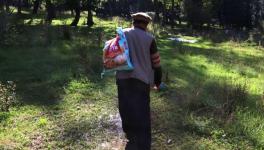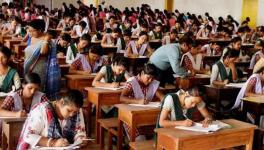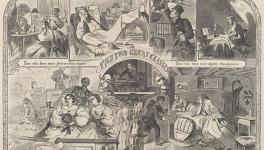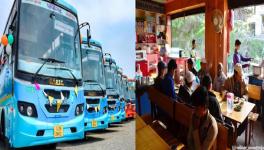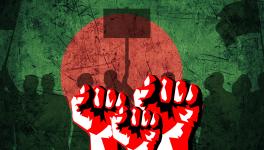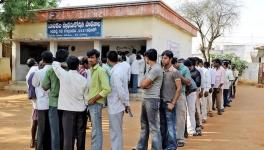How the Halalkhor Community Fights Untouchability and Exclusion
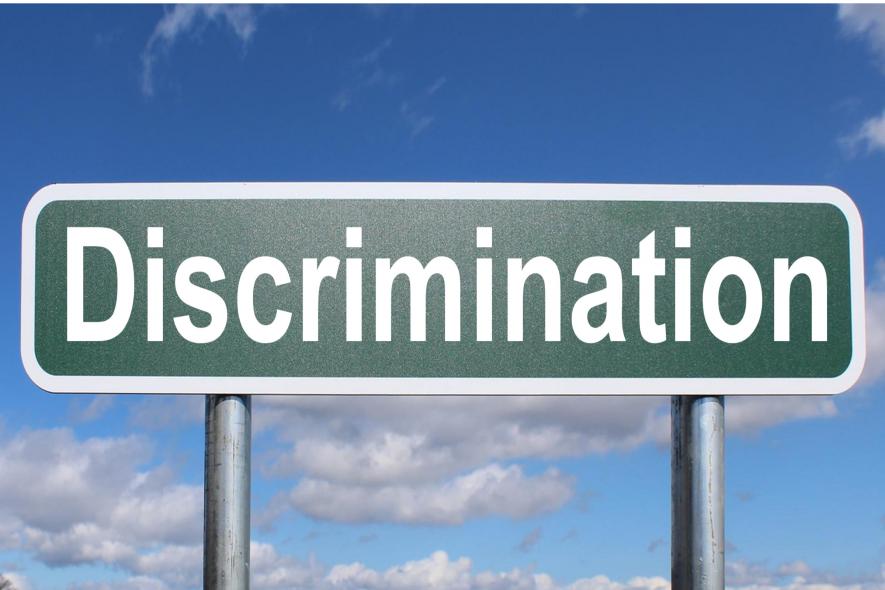
Image Courtesy: PIX4FREE
In his 2001 book, Masavat Ki Jung (Struggle for Equality), Ali Anwar, founder of the Pasmanda Muslim Mahaz, documents the origin and circumstances of the Dalit Muslim communities of Bihar. He records the dire living conditions of most Dalit Muslims who belong to the lower rungs of the Muslim social hierarchy in India.
The Dalit Muslims consist of numerous non-elite castes such as the Lalbegi, Dafali, Halalkhor, and others, which are broadly referred to as the Arjal or Arzal category of Muslims. They are socially and economically oppressed and considered unclean by elite-caste or Ashraf Muslims.
The notion of caste in Indian Muslim community has been up for debate for decades, with many political and religious outfits denying caste and casteism in Muslim community. Scholars of Muslim society too have set out to back this claim in many works. Other scholars have contradicted such claims and asserted the existence of caste.
Regardless, within these debates, the lower-caste Muslims have made their voices heard and led political assertions through many groups such as the All Indian Pasmanda Muslim Mahaz and the much older political party, the All India Momin Conference.
Anwar provides an account of one of the lower castes in the Muslim society, the Halalkhors, noting widespread illiteracy among them and their segregation in separate localities and bastis (slums) away from the localities where so-called upper caste Muslims live.
Anwar’s work emphasises the deliberate nature of the exclusion of the non-elite Halalkhor community by the Ashraf Muslims. They are not entitled to an equal or proportionate share of the resources of the Muslim communities, even during major crises such as epidemics.
The Halalkhor social group faces rampant discrimination in other spheres of life too. For example, the places of worship frequented by members of the excluded communities can be physically very different compared with the mosques of more elite neighbourhoods.
Scholar Arshad Alam has noted in a paper analysing the politics of the Pasmanda Muslim Mahaz, “There have been instances where they [members of the Halalkhor community] have been denied permission to lead prayers in the mosques...”
Alam recounts an anecdote told to him by Taufeeq Ahmad, the imam of a mosque in Azamgarh, Uttar Pradesh. Ahmad, who belongs to the Halalkhor community, complains that his mosque is perpetually short of funds and cannot carry out repairs and maintenance while mosques attended by the elite Ashrafs do not face such issues. Ahmad sees this as a consequence of his social status. Such instances of systemic separation plague members of other Dalit Muslim groups as well.
This exclusion has become the reason for non-elite castes of the Muslims to assert their rights and to challenge their deprivations within the Muslim community. The changing connotations of the word “Halalkhor” are important in this context.
Of late, many in the community have reclaimed the appellation to assert their identity and emphasise their connection with Islamic spiritual traditions. Anwar also speculates about the origins of the Halalkhor identity. He holds that many non-elite Muslim castes were likely Hindus who converted to Islam and started to cure meat in the halal or lawful way as required by Islamic tradition. Hence, he feels, the name Halalkhor, which means a person who follows the halal way, was attached to the community. However, this origin story is still not based on evidence.
Joel Lee, a professor of anthropology at Williams College, Massachusetts, has extensively researched and conducted fieldwork on the Halakhor community. According to his work, the name of the community was popularised by the Mughal emperor Akbar in the 16th century.
At the time, the community was known generally as Kannas or Khakrob—words associated with sweeping and cleaning-related occupations. Akbar then popularised/coined the term Halalkhor to designate the sanitation worker. It carried the meaning, “one who earns an honest living” or “one who eats what is lawful” as opposed to what is haram (unlawful). This term could apply to anyone, regardless of religion, who did sanitation work.
Thus it removed the pejorative connotations of words such as Kannas and Khakrob, which link caste or community with a lowly profession.
Until the time Halalkhor simply meant sanitation workers, it did not specifically denote Muslim Dalit sanitation workers. For example, in colonial censuses and surveys, Halalkhors were recognised as “half Musalmans and half Hindus”.
Only after the 1990s did the term Halakhor become readily associated with Muslims engaged in cleaning work. Today, the Halalkhor community is mostly associated with people in Uttar Pradesh, Bihar, and Jharkhand. They also work as instrumentalists in brass bands.
By the 1940s, members of the community began to struggle against their discrimination. Lee recounts a few stories of these struggles to this author in an email interview. One story is of two sisters from the Halalkhor community in north Varanasi in Uttar Pradesh. The sisters told Lee of a childhood event that took place around the time of India’s independence.
A prominent baba had organised an assembly of Muslims of all castes in which he delivered a sermon on the equality of all believers and asked Muslims to shun untouchability. He then had everyone present, starting with the Halalkhors, to drink sherbet from the same glass.
The baba was Baba Khalil Das, a scholar-activist and author of several books who was friendly with Nehru and Gandhi. “The sisters and others of their generation recall this as a significant turning point when some overt untouchability practices—like the exclusion of Halalkhors from mosques—ceased,” Lee says.
However, other forms of discrimination continued and, according to Lee, it is the generation born in the 1950s and 1960s that “confronted their dominant caste co-religionists on things like the expectation that Halalkhors would stand in the back rows of the mosque for namaz, or the de facto exclusion of Halalkhors from positions like muezzin (one who calls the faithful to prayer).” He says, “People’s stories of these confrontations are amazing.”
In other words, the Halalkhor community has fought untouchability, exclusion from mosques, and other discriminatory practices throughout their history. For example, in Tanda town in Uttar Pradesh, Lee says, they allied with learned scholars of Islam to challenge public forms of untouchability.
“The chaudhury of a Halalkhor panchayat approached scholars at a local madrasa for a judicial opinion (fatwa) on the then common practice of serving Dalit Muslims in separate cups at chai stalls. The ulema acknowledged that this could not be justified in Islam and the Halalkhors publicised the opinion through brochures in the town’s Muslim neighborhoods. With religious authority now in play, chai shop owners complied,” he says.
Within these attempts to end their exclusion and discrimination came the efforts by Halalkhors to figure out their origin stories, and propagate them through their oral traditions.
Lee has traced many vivid stories that are part of their oral traditions as well. For instance, some trace the origin of the community to the period when the Prophet Muhammad and his companions are believed to have lived. In one story recorded by Lee, the community traces its history to an intimate link with the Prophet. The story is told by Hasan Ali, who, Lee informs, was “an admired lathibaz and sanitation worker in Banaras Hindu University”.
The story goes something like this, in the words of Hasan Ali: Why do we call ourselves Halalkhor? For this, we have a history. Elders used to tell us, and it is in the Qur’an and Shariyat, and the ulema (Islamic scholars) used to relate this story as well… One time, Prophet Muhammad was traveling and his health took a bad turn. None of his Muslim companions cleaned up after him when he vomited due to his illness. One man from our biradari stood up and, out of love or whatever reason, gathered the mess and threw it out. The Prophet himself declared that from this day you are truly a Halalkhor.
Thus the Halalkhors place themselves close to the Prophet and occupy some space within the larger Islamic ethics of care. This story also questions the supposedly higher position of the other castes who did not support the Prophet in his hour of need.
Other retellings of this story explicitly say that members of all castes were present when the Prophet was ill, yet no one extended help except the Halalkhor. Their spirituality and faith are thus defined by the one person of their biradari who volunteered to do what is usually considered lowly, in turn earning a well-deserved title of Halalkhor.
In yet another retelling, the Prophet cleans up after guests who are unwell and consequently dignifies the work of cleaning. Lee notes that these stories shift the discourse from the “genealogical to the ethical”, that is, where the action is the primary motif that is accorded with dignity. Supporting the “virtuous care of vulnerable bodies, of dignity amid human frailty” becomes the main aim and theme of such stories.
Of course, such stories may end up fetishising the work of cleaning. They may also imply that the Halalkhors will continue to perform such tasks, now that they have been given a veneer of dignity. They may appear to justify manual scavenging. Lee, however, argues against this interpretation.
The oral tradition of the Halalkhor community restricts the act of cleaning and caring for the Prophet to a single instance and individual. It is never suggested that the biradari took up sanitation work, or that it was passed down generations, because of that individual. Lee says there is also no evidence that these stories have got the community to view sanitation work as a positive occupation.
Instead, these stories uniquely present an Islamic politics that is “simultaneously utopian, critical of dominant castes, and couched in an appeal to tradition [of care],” Lee notes in his essay.
The tradition and assertion of the Halalkhors are noteworthy in the larger context of Dalit politics. Origin as an idea in itself has been a part of larger Dalit tradition to assert their own place in society. For example, the mass religious conversion to Buddhism by the Mahars and other Dalits under Ambedkar in 1956 also traced the lower castes to be originally followers of Buddhism and claimed that Hinduism and the caste system was imposed on them.
The Adi-Hindu movement of the 1920s also claimed the achhut identity of the Dalits as meaning pure/untouched (contrary to the present-day usage of achhut as ‘untouchable’) akin to the usage in poetry in the 16th century Bhakti saints. The movement also asserted that the Dalits are “Adi-Hindus” (original/first Hindus) against the hegemonic spiritual control of the Brahmins over Hindu religious practices.
Lee suggests, regarding the context of ‘origin accounts’ that the specific accounts of the Halalkhors might not fit our expectations. Their origin accounts “don’t follow the paradigm of Phule or the Adi-movements that we might anticipate or look for (but nor do they endorse or justify Halalkhor subjugation),” Lee says.
It is the uniqueness of the Halalkhor tradition that is of much intrigue and celebration, which diversifies the origin accounts of the Dalits which contains assertions and stories of a large range, from assertive politics to spirited, intimate care.
The author is an independent writer, interested in the history of traditional and modern cultures of India. The views are personal.
Get the latest reports & analysis with people's perspective on Protests, movements & deep analytical videos, discussions of the current affairs in your Telegram app. Subscribe to NewsClick's Telegram channel & get Real-Time updates on stories, as they get published on our website.









